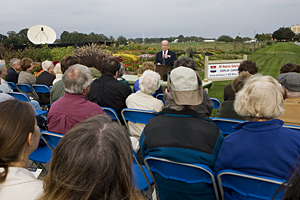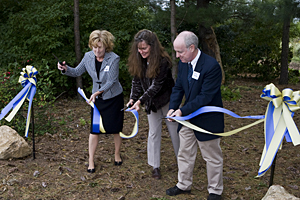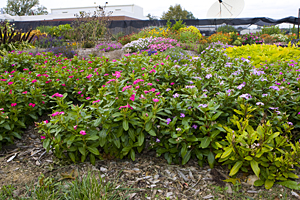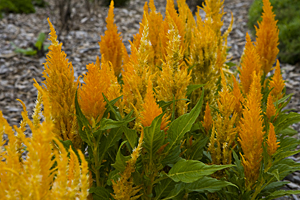

- Rozovsky wins prestigious NSF Early Career Award
- UD students meet alumni, experience 'closing bell' at NYSE
- Newark Police seek assistance in identifying suspects in robbery
- Rivlin says bipartisan budget action, stronger budget rules key to reversing debt
- Stink bugs shouldn't pose problem until late summer
- Gao to honor Placido Domingo in Washington performance
- Adopt-A-Highway project keeps Lewes road clean
- WVUD's Radiothon fundraiser runs April 1-10
- W.D. Snodgrass Symposium to honor Pulitzer winner
- New guide helps cancer patients manage symptoms
- UD in the News, March 25, 2011
- For the Record, March 25, 2011
- Public opinion expert discusses world views of U.S. in Global Agenda series
- Congressional delegation, dean laud Center for Community Research and Service program
- Center for Political Communication sets symposium on politics, entertainment
- Students work to raise funds, awareness of domestic violence
- Equestrian team wins regional championship in Western riding
- Markell, Harker stress importance of agriculture to Delaware's economy
- Carol A. Ammon MBA Case Competition winners announced
- Prof presents blood-clotting studies at Gordon Research Conference
- Sexual Assault Awareness Month events, programs announced
- Stay connected with Sea Grant, CEOE e-newsletter
- A message to UD regarding the tragedy in Japan
- More News >>
- March 31-May 14: REP stages Neil Simon's 'The Good Doctor'
- April 2: Newark plans annual 'wine and dine'
- April 5: Expert perspective on U.S. health care
- April 5: Comedian Ace Guillen to visit Scrounge
- April 6, May 4: School of Nursing sponsors research lecture series
- April 6-May 4: Confucius Institute presents Chinese Film Series on Wednesdays
- April 6: IPCC's Pachauri to discuss sustainable development in DENIN Dialogue Series
- April 7: 'WVUDstock' radiothon concert announced
- April 8: English Language Institute presents 'Arts in Translation'
- April 9: Green and Healthy Living Expo planned at The Bob
- April 9: Center for Political Communication to host Onion editor
- April 10: Alumni Easter Egg-stravaganza planned
- April 11: CDS session to focus on visual assistive technologies
- April 12: T.J. Stiles to speak at UDLA annual dinner
- April 15, 16: Annual UD push lawnmower tune-up scheduled
- April 15, 16: Master Players series presents iMusic 4, China Magpie
- April 15, 16: Delaware Symphony, UD chorus to perform Mahler work
- April 18: Former NFL Coach Bill Cowher featured in UD Speaks
- April 21-24: Sesame Street Live brings Elmo and friends to The Bob
- April 30: Save the date for Ag Day 2011 at UD
- April 30: Symposium to consider 'Frontiers at the Chemistry-Biology Interface'
- April 30-May 1: Relay for Life set at Delaware Field House
- May 4: Delaware Membrane Protein Symposium announced
- May 5: Northwestern University's Leon Keer to deliver Kerr lecture
- May 7: Women's volleyball team to host second annual Spring Fling
- Through May 3: SPPA announces speakers for 10th annual lecture series
- Through May 4: Global Agenda sees U.S. through others' eyes; World Bank president to speak
- Through May 4: 'Research on Race, Ethnicity, Culture' topic of series
- Through May 9: Black American Studies announces lecture series
- Through May 11: 'Challenges in Jewish Culture' lecture series announced
- Through May 11: Area Studies research featured in speaker series
- Through June 5: 'Andy Warhol: Behind the Camera' on view in Old College Gallery
- Through July 15: 'Bodyscapes' on view at Mechanical Hall Gallery
- More What's Happening >>
- UD calendar >>
- Middle States evaluation team on campus April 5
- Phipps named HR Liaison of the Quarter
- Senior wins iPad for participating in assessment study
- April 19: Procurement Services schedules information sessions
- UD Bookstore announces spring break hours
- HealthyU Wellness Program encourages employees to 'Step into Spring'
- April 8-29: Faculty roundtable series considers student engagement
- GRE is changing; learn more at April 15 info session
- April 30: UD Evening with Blue Rocks set for employees
- Morris Library to be open 24/7 during final exams
- More Campus FYI >>
10:50 a.m., Oct. 13, 2009----Butterflies, moths and skippers -- also known as Lepidoptera --not to mention birds, bees and other insects have a new habitat in the University of Delaware Botanic Garden on South Campus, the Lepidoptera Trail, which has been created just for them.
The trail features native plants that provide a natural setting for the insects and the birds that they attract and helps them survive and thrive.
Located behind Townsend Hall and the UD greenhouses near the Herbaceous Garden, the Lepidoptera Trail was officially opened Oct. 2 with a ribbon-cutting ceremony, although the new residents had already moved in.
John Frett, director of the University of Delaware Botanic Gardens, welcomed approximately 125 guests, followed by remarks from Robin Morgan, dean of the College of Agriculture and Natural Resources, and Douglas Tallamy, chairperson of the Department of Entomology and Wildlife Ecology.
“The trail is not a butterfly garden, which is designed to attract butterflies to feed on nectar,” Frett said. “It is an ecosystem to attract Lepidoptera during their life cycle. It's a place for them to lay their eggs, which become larvae or caterpillars before entering the inactive pupal stage and then emerging as butterflies, moths or skippers.”
The Lepidoptera Trail, like other UD Botanic Gardens, is designed as an outdoor laboratory, he said, and can be used for a variety of classes from sculpture to entomology.
Tallamy pointed out that there are 3,500 species of Lepidoptera in this area but just 187 of these are butterflies. “We are dependent on all forms of life, and we have decreased natural habitats by paving over so much land and have to learn to share our landscapes. This is a fantastic garden and shows what can be done that is both natural and aesthetically pleasing,” he said.
The trail is a dream come true for Melinda Zoehrer, assistant director of the UD Botanic Gardens, who has been advocating the trail for a long time. “It is habitat gardening that is doable and beautiful and can serve as a model for the public. The garden can be used by students for learning to identify insects,” she said, pointing out clusters of busy bugs on milkweed plants, “and can be used for research.”
The trail is self-guiding with signs that identify the various plantings, which are native to this region. It has a natural look with trees, shrubs, wild flowers and grasses. “We have a chorus of sounds here from birds and insects,” Zoehrer said. “We even have a small pond, and I'm waiting for frogs to move in and join in.”
Steve Hutton of Conard-Pyle Co. provided financing for interpretive signs, and Steve Castorani of North Creek Nurseries and others provided plants while volunteers did a great job in making the trail become a reality, Frett said.
Article by Sue Moncure
Photos by Ambre Alexander




